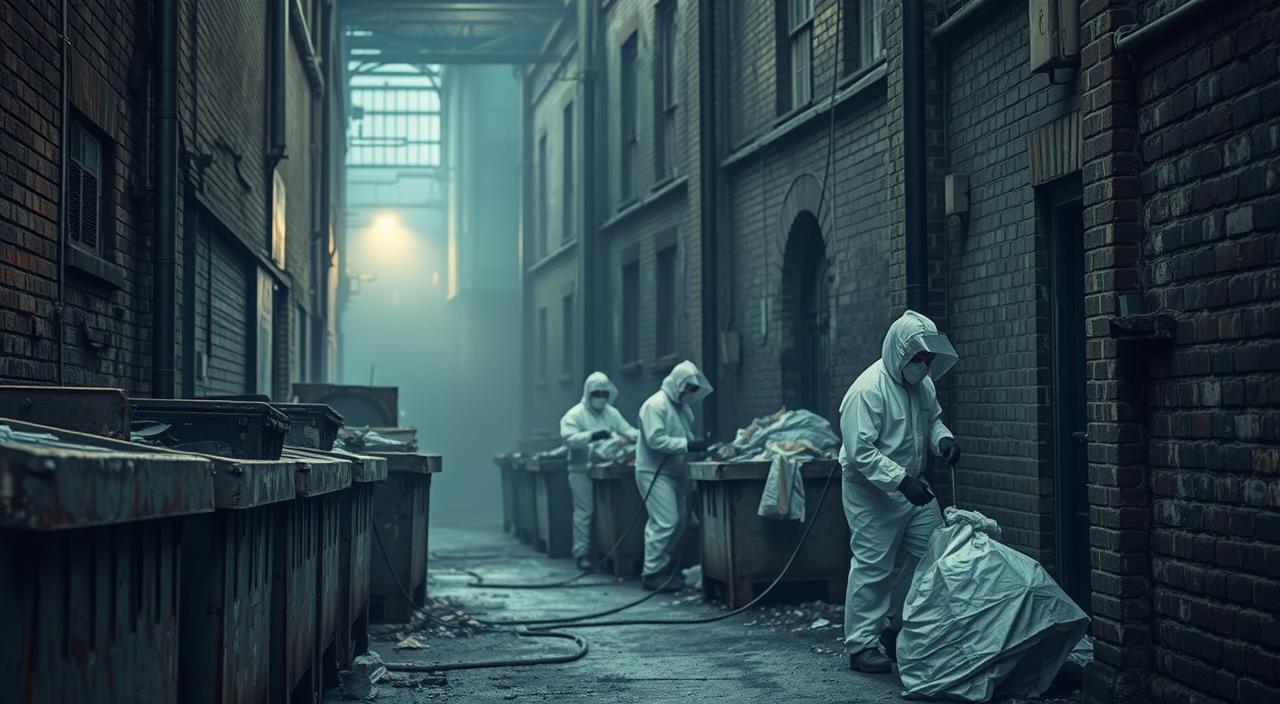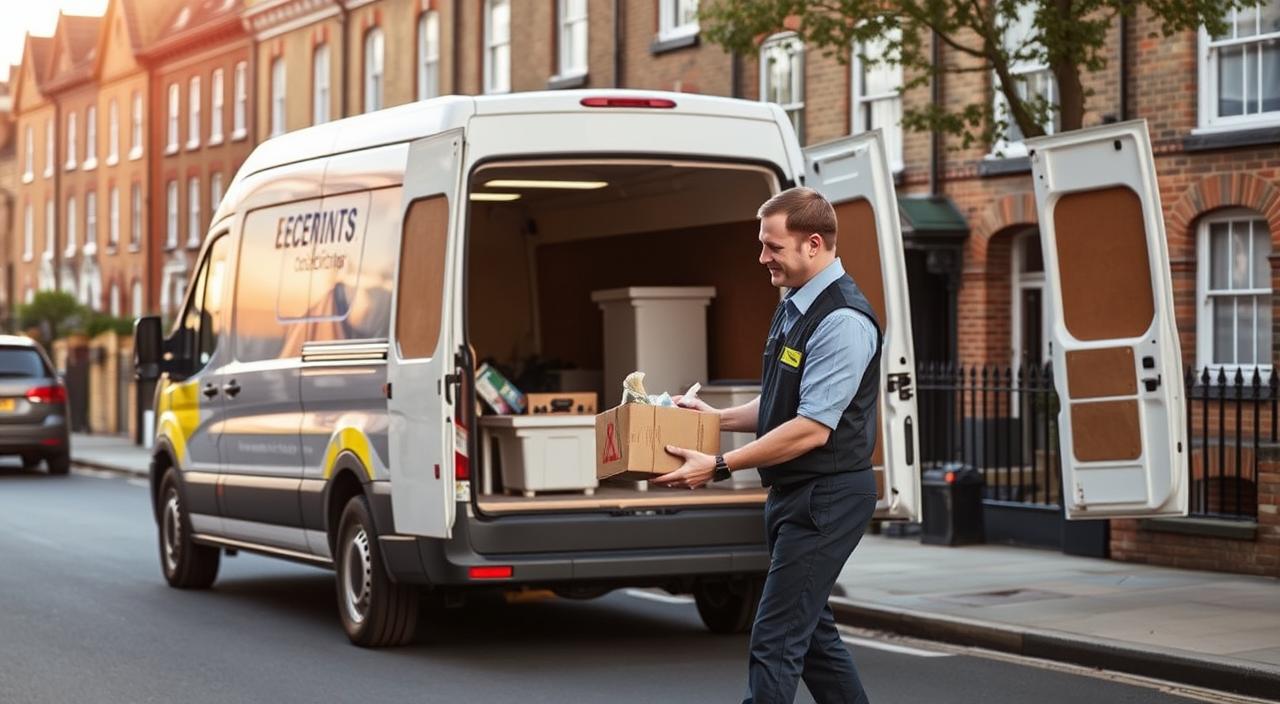Toxic homes London are an overlooked problem in the capital’s housing market. Behind elegant Victorian terraces and Georgian façades, many older properties conceal asbestos, lead-based paints, fluorescent tubes, and even forgotten chemicals in sheds and basements. Left undisturbed, these materials remain hidden. But once renovations begin, they can release harmful fibres and vapours that threaten both human health and the environment.

This guide explores the hidden risks of toxic homes, why older London properties are particularly vulnerable, what UK law requires, and how accredited disposal services protect families, neighbours, and ecosystems.
Key Takeaways
- Period homes in London often contain asbestos, oils, paints, pesticides, and old batteries.
- DIY handling of hazardous materials is unsafe – always seek a professional survey.
- UK law requires licensed carriers and treatment facilities for disposal.
- Documentation like consignment notes and chain of custody protects homeowners.
- Professional services reduce exposure, improve compliance, and keep projects on track.
Toxic Homes London: Why Older Properties Pose Hidden Risks
London’s building boom from the 19th and early 20th centuries relied on materials that are now banned or heavily restricted. Many homes still contain them today.
Hidden Hazards Behind the Walls
- Asbestos: Found in lagging, insulating boards, and fireproof panels.
- Lead & solvent-based paints: Applied to woodwork, windows, and walls.
- Petroleum products & oils: Often left in basements or garages.
- Batteries & fluorescent tubes: Fixtures from mid-century renovations.
Disturbing these materials during refurbishment can cause serious health risks. Even a small release in a poorly ventilated period home may lead to long-term exposure.
What Is Hazardous Waste?
Under UK law, waste is hazardous when it can harm human health or the environment.
Categories include:
- Corrosive (acids, caustics).
- Toxic (pesticides, solvents).
- Flammable (petroleum products, paints).
- Reactive (chemicals that react on contact).
- Carcinogenic (asbestos fibres, heavy metals).
Typical Sources in Older Properties
- Pipe insulation and fireproof boards (asbestos).
- Window frames with lead paint.
- Fuel cans and pesticides in sheds.
- Cleaning products stored in cellars.
Health Effects of Hazardous Materials
Exposure routes include inhalation, ingestion, and skin contact.
Potential health risks:
- Respiratory disease & cancers (from asbestos and fumes).
- Skin burns & irritation (from caustic cleaners and solvents).
- Long-term neurological effects (from heavy metals like lead).
Environmental risks also arise when chemicals leak into soil and water, harming local wildlife and contaminating ecosystems.
Legal Duties for Hazardous Waste Disposal in the UK
Homeowners and contractors remain responsible for hazardous waste until final disposal. The Control of Substances Hazardous to Health (COSHH) regulations and waste transfer laws govern safe handling.
Compliance Requirements
- Only authorised carriers may transport hazardous waste.
- Items must be labelled and sealed before collection.
- Each load requires a consignment note.
- Producers must maintain a chain of custody until disposal.
👉 Learn more from official guidance at the UK Government hazardous waste page.
Our Hazardous Waste Collection Service in London

We provide full-service collection and compliant disposal for hazardous materials found in London’s older homes.
Service Features
- Surveys to classify risks and materials.
- Segregation of waste streams to prevent reactions.
- Secure containers (drums, IBCs, sealed crates).
- Licensed carriers with time-stamped records.
- Audit-ready documentation including certificates of disposal.
What We Safely Collect
| Material Type | Typical Source | Handling Method |
|---|---|---|
| Asbestos boards | Lofts, wall panels, basements | Double-sealed, transported to licensed sites |
| Solvents & oils | Garages, workshops | Sealed drums, specialist treatment |
| Batteries & tubes | Fixtures, sheds | Mercury-safe recycling facilities |
| Clinical / low-radio | Medical kits, smoke alarms | Segregated, approved disposal pathways |
Specialist Streams for Complex Waste
Some hazardous streams need tailored handling:
- Asbestos surveys & removals with licensed carriers.
- Chemical segregation (acids, caustics, solvents).
- Paint can collection after refurbishments.
- WEEE disposal for IT equipment and electronics.
| Stream | Example Items | Final Route |
|---|---|---|
| Asbestos | Insulating boards, lagging | Double-sealed, authorised disposal facilities |
| Chemicals | Petrol, solvents, acids | Segregated, compliant treatment plants |
| WEEE | PCs, phones, power tools | Data-safe processing, accredited facilities |
Who Benefits from Our Service
Hazardous waste affects homeowners, landlords, offices, schools, and hospitals.
- Homeowners & landlords: safe clearance during renovations.
- Offices & co-working: WEEE and chemicals from fit-outs.
- Schools & hospitals: strict compliance for clinical and chemical waste.
- Warehouses & industry: bulk disposals and recurring clear-outs.
Costs of Hazardous Waste Disposal
Pricing depends on:
- Type of material (flammables are costlier).
- Volume and weight.
- Treatment pathway (incineration vs recycling).
We provide clear, itemised quotes with no hidden fees. Recycling is prioritised where lawful to reduce costs and environmental impact.
All waste removal services provide a waste transfer note (or duty of care note), offering transparent documentation of what materials were collected and how they were disposed of.
Credentials You Can Trust
Our teams are fully licensed and insured, with:
- Environment Agency authorisation.
- ISO 9001 & ISO 14001 certifications.
- SafeContractor accreditation.
These credentials give you confidence that waste from toxic homes London properties is handled safely and lawfully.
Booking Hazardous Waste Collection

Booking is straightforward:
- Confirm items and estimated volume.
- Choose a convenient slot.
- Our team arrives with secure containers.
- Receive full documentation, from consignment notes to disposal certificates.
Conclusion
London’s historic homes hide beauty – and danger. Many contain asbestos, lead paint, solvents, and forgotten chemicals that can make them toxic homes London residents must approach with care.
Before starting any renovation:
- Arrange a professional survey.
- Keep hazardous streams separate.
- Use licensed carriers with full documentation.
With forward planning, toxic legacies can be removed safely and legally, protecting health, neighbours, and the environment.